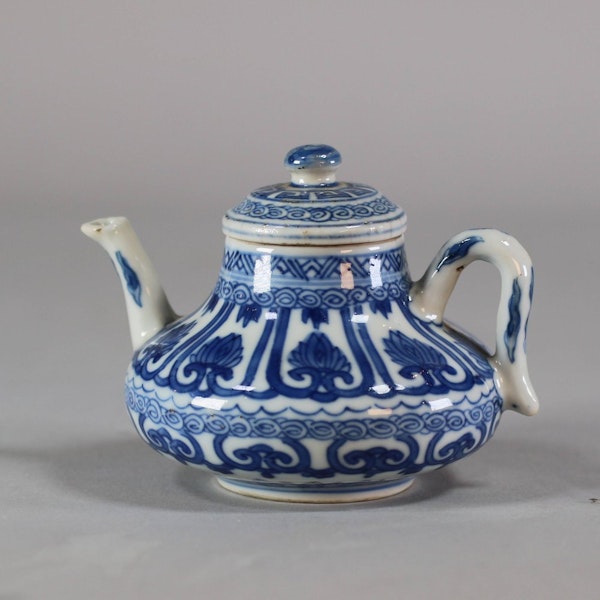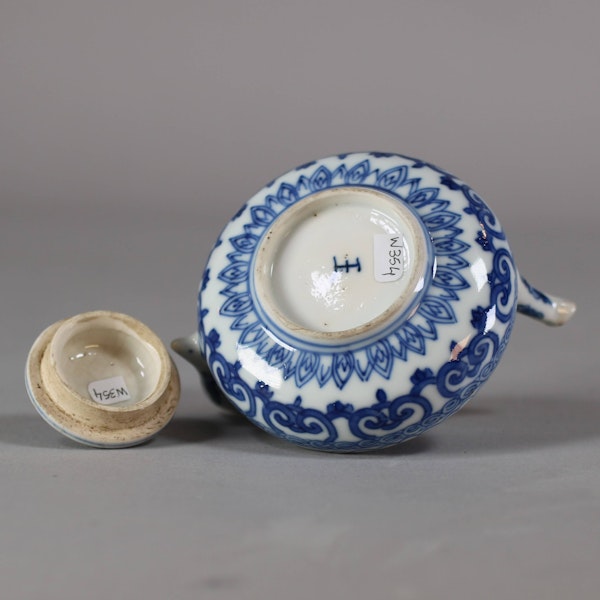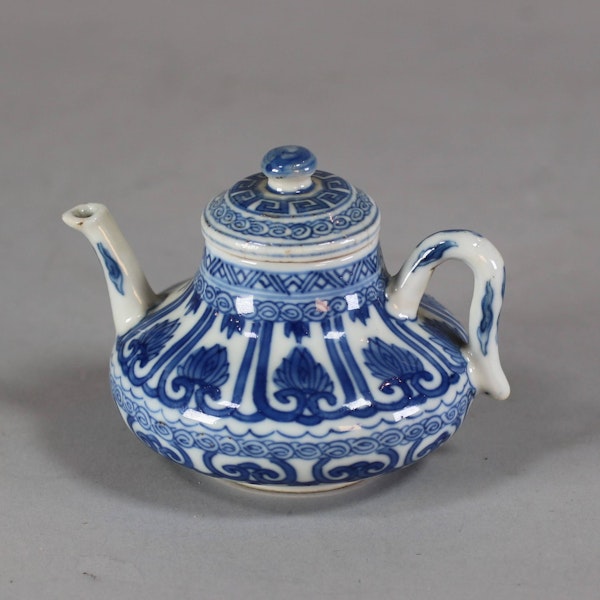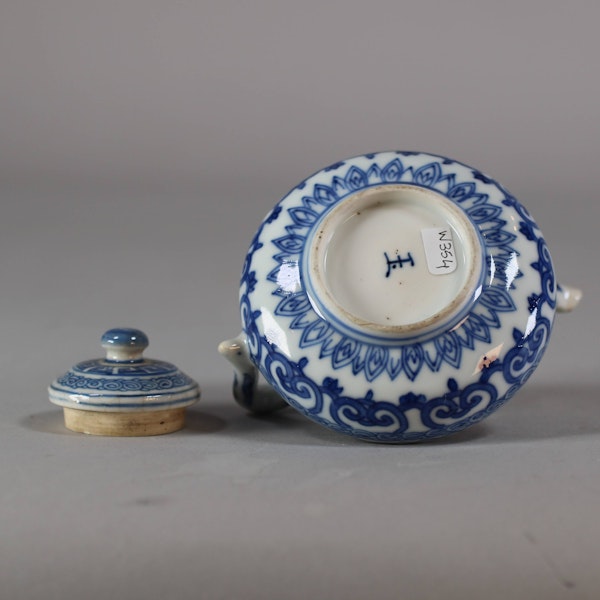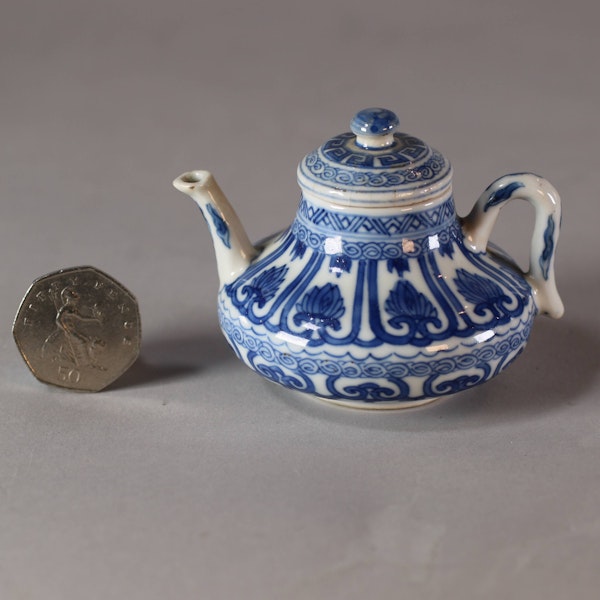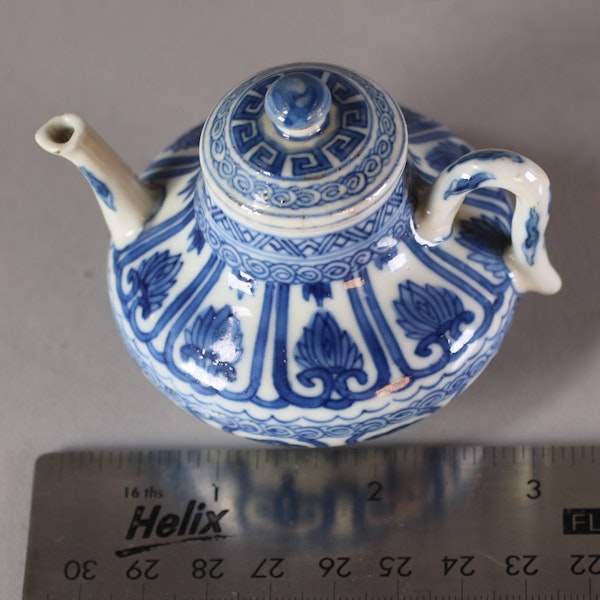Chinese, probably soft paste, blue and white miniature teapot, Kangxi (1662-1722)
Chinese, probably soft paste, blue and white miniature teapot, Kangxi (1662-1722)
POA
Description
Chinese, probably soft paste, blue and white miniature teapot, Kangxi (1662-1722), of squat globular form with stylised pattern of radiating lappets containing lotus heads above bands of tight scrolls, interlocking loops and a band of stiff lotus petals, the rim with band of geometric pattern; wisps of cloud to the handle and spout; the lid decorated with raised bands of scrolls and square hook design; the base with ‘yu’ mark meaning jade or precious stone
Dimensions:
Length: 8.5cm. (3 3/8in.), height 6cm. (2 3/8in.)
Condition:
Two small chips to end of spout and slight glaze crazing to lid.
Notes:
See the Met collection for an identical teapot. A teapot of similar design can be found in the collection of the Rijksmuseum (AK-NM-6833-A). The lotus, Buddhist emblem of truth, purity and enlightenment, was a popular design motif in Chinese ceramics from the arrival of Buddhism during the Han Dynasty (202 BCE–220 CE). A fully opened flower, as seen on this teapot, refers to full awakening, and could be a humorous reference to the stimulating properties of tea.
| item details | |
|---|---|
| Material and Technique | Soft paste porcelain with underglaze cobalt blue decoration |
| Origin | Chinese |
| Period | 17th Century |
| Condition | Very good |
| Dimensions | Length: 8.5cm. (3 3/8in.), height 6cm. (2 3/8in.) |
Product REF: W354
